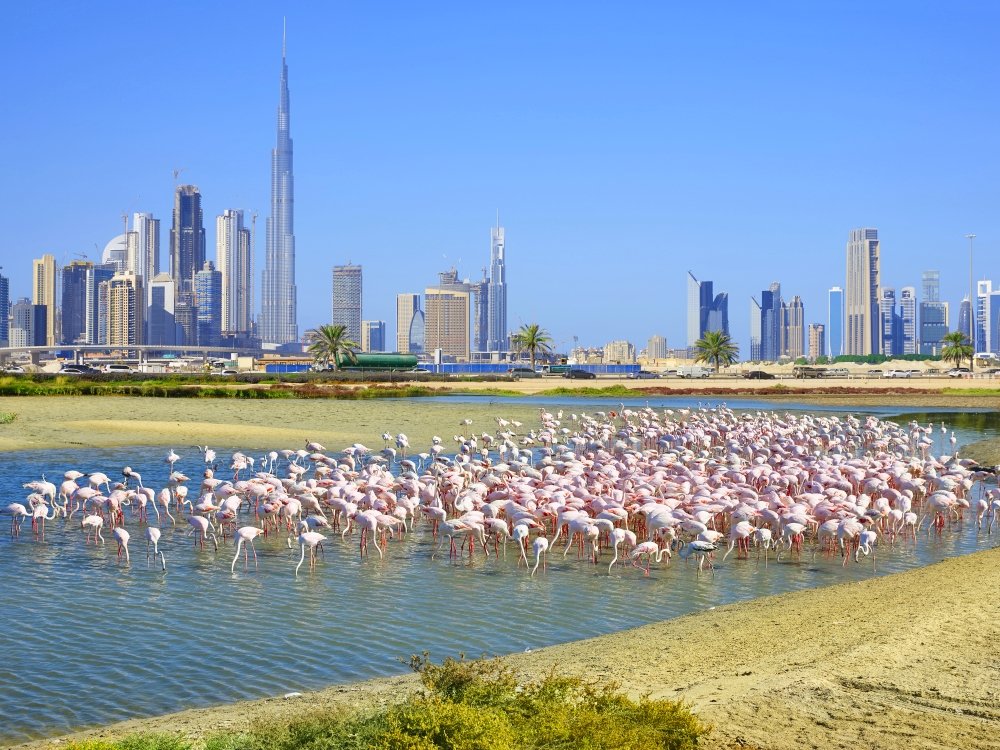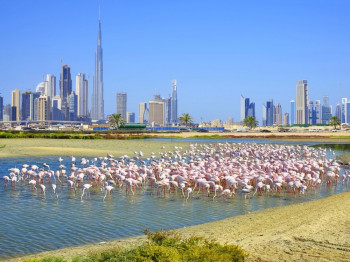Review about Ras Al Khor Wildlife Sanctuary from Lavrenets Kateryna
Maybe it was a mistake - we just saw a photo of a flamingo, read a couple of great reviews and rushed off to look for this place. Searched for 1.5 hours (the navigator brought to another point, asked the locals - no one knew about this place. As a result: a small house with 3 chairs and 4 windows, 1 binoculars. Several small lakes in a fenced area. A few flamingos in the distance, different birds - all this can be seen through binoculars. Not a single bird came to the house. In short, we watched for 5 minutes and drove from there.
Ras Al Khor Wildlife Sanctuary
- Mon
- 07:30 AM - 05:30 PM
- Tue
- 07:30 AM - 05:30 PM
- Wed
- 07:30 AM - 05:30 PM
- Thu
- 07:30 AM - 05:30 PM
- Fri
- 07:30 AM - 05:30 PM
- Sat
- 07:30 AM - 05:30 PM
- Sun
- 07:30 AM - 05:30 PM
Services:
Winter
(October – March)
7:30am – 5:30pm
Summer
(April – September)
6:00am – 6:00pm
Things to take along:
Binoculars, Camera and a Bird guide
Important Reminders Inside the sanctuary hide:
Quiet zone, No Phone, No pets, No food, No drinks, No Smoking
Just metres away from the bustling city of Dubai, you’ll find stunning birds in the wetlands of Ras Al Khor Wildlife Sanctuary.
Known as the ‘Cape of the Creek,’ Ras Al Khor Wildlife Sanctuary covers an area of 6.2sqkm and features a variety of salt flats, intertidal mudflats, mangroves, and lagoons that birds use for their nests and individual habitats.
Ras al Khor Wildife Sanctuary is one of the few urban protected areas in the arid zone. It is a wetland of global importance under the Ramsar Convention and recognised as an Important Bird Area by Bird Life International. The sanctuary is fenced off to protect the area and is closely monitored by the Dubai Municipality.
This wetland reserve also serves as a breeding ground and home for crustaceans, mammals and fish, but it is the flamingos that steal the show in winter. Look closer among the mass of pink feathers and it's possible to spot grey herons, great egrets, reef herons, cormorants, black-winged stilts, sandpipers, osprey and more.
There are three bird hides located on the perimeter of the sanctuary which are free for the public to access during set daylight hours. These hides are the first step in an ongoing project to develop the protected area.
If you find an error in the description, please let us know!



Comments on the review (0)